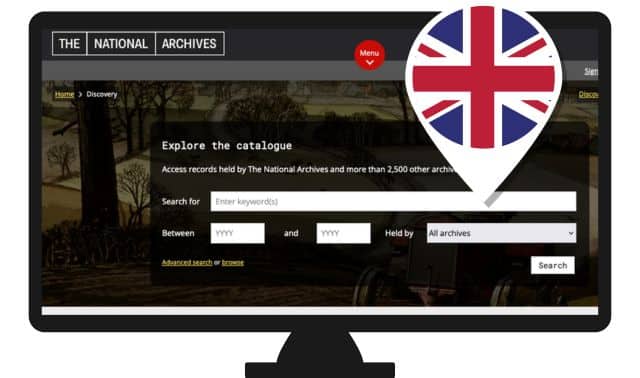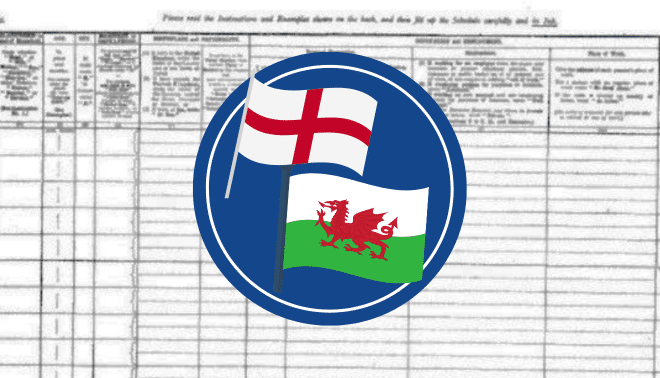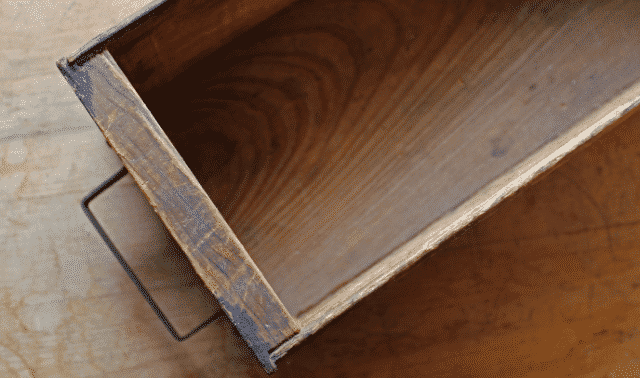
If you have Welsh ancestry, you’re in luck. The most important records for Welsh genealogy, including church records, census records and wills, are online. In this article, I’ll give you an overview of the key resources for researching your Welsh ancestry and highlight several online record collections that focus specifically on Wales.
History lesson
Before we look at genealogy records, let’s review some background on Wales. Wales, which is located in southwestern Great Britain, was settled by Celtic tribes around 1000 B.C. Wales got its name from the Anglo-Saxon word wealas, meaning “foreigners.” The Celts called themselves cymry (“fellow countrymen”) and their territory Cymru. Today Wales, England, Scotland and Northern Ireland form the United Kingdom. Slightly smaller than Massachusetts in land area, Wales has less than half of that state’s population. Wales is known for its distinctive language—one of the oldest living languages in Europe—rugged coastline and mountainous national parks. Often called “the land of song,” Wales is also renowned for its harpists and male choirs.
Wales united with England in 1536 and most Welsh and English records are similar. Even though the majority of the population in Wales spoke Welsh until recent centuries, most records were kept in English.
Several large genealogy websites have gathered links to all their sites’ resources for Wales. For everything from maps, message boards and how-to articles to digitized records, books, histories and biographies, check subscription sites. Start with Ancestry.com, MyHeritage and World Vital Records, or look at free sites such as FamilySearch.org and GENUKI.
Researching the right surnames
A key difference between England and Wales was the naming system. While most people in England adopted fixed surnames by 1400, the patronymic system prevailed in some parts of Wales well into the 19th century. In the Welsh naming system, a child was given the father’s given name as a last name. The word ap or ab, meaning “son of,” might be inserted between the son’s name and the father’s name. Therefore, David ab Owen meant David “son of” Owen. David could drop the ab and be known as simply David Owen or David Owens. Or he might drop just the “a” in ab and combine the b with Owen to become David Bowen. All the children in a family might not use the same last name. For example, my ancestor Roger Powell’s will, written in 1752, mentions his son Howell Prosser (Prosser is a contraction of ap and Roger), but the 1748 marriage record of Roger’s daughter listed her as Joan Powell, not Joan Prosser.
One consequence of the patronymic naming system is the narrow range of Welsh surnames today. Common boys’ names during the period when people adopted fixed surnames included John, David, William and Hugh, which became the common surnames Jones, Davies or Davis, Williams and Hughes. You may have to closely analyze historical records to distinguish your ancestors from other people with the same name.
Putting ancestors in their place
Finding your ancestors in the land of Jones and Davies is much easier if you can narrow your search to a specific place. Interview your relatives and check family papers such as letters, family Bibles and obituaries for clues to the places in Wales where your ancestors lived. Knowing at least a town or county is helpful, but a specific parish is even better. Keep in mind that the county boundaries in England and Wales were redrawn in 1974.
Welsh records often refer to people by the farm name where they lived, so farm names are a good way to distinguish different people with the same name. My inquiries for clues to my Welsh ancestors’ hometown turned up a very informative document in the possession of a relative: a 30-by-30-inch parchment paper from 1788 with my ancestor Samuel Jones’s lease to a farm called Llwynfilly and Cocket in the parish of “Lanigon,” county of Breconshire, Wales. Under the terms of the 21-year lease, Samuel agreed to pay 63 pounds a year, plus “one fat goose and two fat hens at Christmas.”
Gazetteers: Check gazetteers for information on towns, parishes, counties, rivers, mountains and other geographical features. Many places in Wales have alternate spellings and even completely different names in English and Welsh. British History Online has A Topographical Dictionary of Wales from 1849. The entry for Llanigon (note the spelling) says the parish is located in the county of Brecknock (another name for Breconshire) and named for Saint Eigen or Saint Eigion. (Many Welsh parishes begin with llan, which means “church” and is usually followed by the name of the saint to whom the church was dedicated.) The topographical dictionary deems Llanigon’s lower districts “tolerably fertile, affording good crops of grain and valuable pasturage for cattle and sheep, upon the rearing of which the farmers principally depend.”
Online maps: Online maps can help you locate a parish and identify neighboring parishes where you might find family connections. My favorite online map of Great Britain, Streetmap, displays beautiful Landranger maps and even lets you search for a house or farm name. You can zoom in to see county and parish boundaries on the map of Wales on FamilySearch.org. Select Diocese from the options above the map to display diocese boundaries, useful for using FamilySearch.org’s abstracts of Welsh wills. Ancestry.com’s digitized maps from The Phillimore Atlas and Index of Parish Registers show county and parish boundaries, plus they’re color-coded to outline probate jurisdictions.
Be sure to Google the names of your ancestral farms in Wales to locate them on a map, view pictures of them if they still exist, and learn about their history. A Google search reveals that my ancestors’ farm, Maestorglwydd, has three farmhouses (lower, middle and upper) and that parts of them date from the 17th century. Llwynfilly is a beautiful two-story home, the exterior of which probably looks about the same as it did 200 years ago. It’s now a youth activity center.
Getting church records
In 1538, Henry VIII issued an order to every parish priest in England and Wales to start keeping records of christenings, marriages and burials. Church of England records are the best source of family information before the government began registering vital records in 1837. English and Welsh parish registers are similar, but more Welsh ones have been lost.
Christenings: Most children were christened within a few weeks of birth. Christening records provide the infant’s name and date of christening, but not usually the date of birth. They may also include the father’s name and occupation, the mother’s first name, the child’s legitimacy and the family’s place of residence. You can’t usually tell what the child’s last name was in earlier christening records.
Marriages: The Welsh typically got married in their mid-20s, with the wedding taking place in the bride’s parish. Couples could meet the requirements to marry in two ways: by banns or by a license. The minister posted banns for three consecutive Sundays to announce the couple’s intent to marry, giving the public the opportunity to object to the marriage. A couple applied to the church for a license when they didn’t want to wait three weeks for the proclamation of banns, preferred not to subject themselves to the publication of banns or lived in different dioceses.
Officials recorded banns in separate registers starting in 1754. The National Library of Wales has an index of applicants for marriage licenses, 1616-1837 isys.llgc.org.uk. Select the Marriage Bonds database, then search on your ancestor’s name. Then, choose to view the result for the location and time period that match your ancestor.
Burials: Burial records before 1813 give the deceased person’s name and date of burial. Sometimes they also include the age, place of residence, cause of death and occupation, as well as the husband’s or father’s name. Starting in 1813, the records give the name, age, residence and date of burial. Keep in mind that a widow might revert to her maiden name and be buried under that name.
Thanks to a cooperative effort between the National Library of Wales, the Welsh County Archivists Group, Findmypast.com and FamilySearch, all 8 million Welsh parish records of baptisms, marriages and burials dating back to 1538 are being published online. To search the index for free on FamilySearch.org, go to the Wales search page and search all the indexed collections at once or select parish registers for a particular county. You can also search the index on Findmypast.co.uk, where you can view transcriptions and record images if you have a subscription or pay-per-view credits.
The indexes on FamilySearch.org are linked to the record images on Findmypast.co.uk.To find your ancestors’ marriage on Findmypast.co.uk, select Parish Records in the UK Family History Records section at Findmypast.co.uk, then narrow the search to the record type you’re searching for, such as Marriages & Divorces. In the search form, fill in the ancestor’s first and last names and his year of marriage, then select a record set to search. I found a marriage record for my ancestors Samuel Jones and Anne Powell, married in Llanigon in 1786. Findmypast hasn’t yet linked that transcription to a digital image of the original record, but I found images for other records, such as Samuel’s burial and his children’s christenings.
When searching for ancestors in parish registers on Findmypast.co.uk, you can leave the first and last names fields blank and use the Optional Keywords box to narrow your searches. For example, to find records for an ancestor’s children baptized in a parish, enter his name and location in the Optional Keywords box, plus a year range for the year of birth. Using this search strategy, I found records for Samuel Jones’s five children baptized between 1789 and 1800, including two that I hadn’t found in the bishop’s transcripts (more on these later).
Additionally, when searching for someone who might have had a patronymic last name, you might try leaving the Last Name box blank and putting the father’s first name in the Optional Keywords box.But don’t expect to find every Welsh christening, marriage and burial in the parish register indexes on Findmypast.co.uk and FamilySearch.org. The former hasn’t yet put all the Welsh parish registers online, so you can’t currently browse the records page by page. Baptisms of Nonconformists, such as Baptists, Methodists and Congregationalists, won’t necessarily appear in the parish registers of the Church of England (in Wales, called the Church in Wales). However, from 1754 to 1837 everyone except Jews and Quakers could be married only in the Church of England.
Bishop’s transcripts: Starting in 1598, a copy of the parish register was sent each year to the bishop of the diocese. Called bishop’s transcripts, these were supposed to be exact copies, but differences may exist between parish registers and bishop’s transcripts, so check both of them when available. The earliest surviving bishop’s transcripts in Wales date from about 1662, but most begin after 1700 and have many years missing. Many christenings and marriages in the Welsh bishop’s transcripts are indexed in FamilySearch.org’s–1907 Wales Births and Baptisms, 1541 and the International Genealogical Index. Many burials, most dating from 1813 to 1850 and derived from both parish registers and bishop’s transcripts, are indexed in the National Burial Index for England & Wales on Findmypast. The Family History Library has microfilmed copies of many bishop’s transcripts, and you can borrow them through a local FamilySearch Center for a small fee. To find the microfilm numbers, run a Places search of the FamilySearch online catalog for the name of the parish.
Registering vital facts
In 1837, the British government started keeping civil registration records of births, marriages and deaths in England and Wales. FreeBMD, FamilySearch.org, Ancestry.com and MyHeritage have civil birth, marriage and death indexes. Keep in mind that while the actual record will contain the town or other place of death, the indexes refer to a registration district, not the exact town where the birth, marriage or death occurred.
For example, Thomas Morgan’s brother William stayed on Maestorglwydd farm. His name is listed in the index to deaths in England and Wales for the first quarter of 1868: “Morgan, William. Age 70. District: Hay. Volume 11b, page 110.” Hay, the registration district, covers several towns in central Wales and in the neighboring area of England. William actually died at his farm home in Llanigon.
You can order birth, marriage and death certificates for events registered in England and Wales from England and Wales General Register Office; a certificate costs about $14. See my guide to English and Welsh civil registrations in the May/June 2013 Family Tree Magazine for more details.
Counting on censuses
The British government has taken censuses every 10 years since 1801, except for 1941. The 1841 census was the first one to list every person by name and the 1911 census is the most recent one open to the public. Starting in 1851, the census lists each person’s parish of birth. That’s very helpful in locating the origins of people born before civil registration began.
The original 1871 census schedules that household members completed were destroyed, but the enumerators’ books were kept and microfilmed. Beginning with that census, a W in the first column indicates that the householder completed the schedule in Welsh. Since 1891, the census has included a question on the ability to speak Welsh.
Several subscription websites have English and Welsh census records. MyHeritage and World Vital Records have the records from 1841 to 1901 and Ancestry.com, Findmypast.com, Genes Reunited and TheGenealogist.co.uk have them from 1841 to 1911. FamilySearch.org has free searchable indexes to the censuses from 1841 to 1911, with all years except 1881 linked to images on Findmypast.co.uk.
Finding the will
Probate records pertain to the distribution of a person’s estate after death. These records may name heirs, their relationships and places of residence, include an inventory of the estate and provide the deceased’s date of death. Most wills were made by men with property. Administrations deal with the settlement of the estates of people who die without a will. The National Library of Wales has put all wills and administrations proved in Wales between 1521 and 1858 online. Search the index by any combination of name, year range, diocese, parish, township and occupation. You can order a digital copy for about $5 or use screen capture to save the images as files on your computer. FamilySearch.org’s image-only historical records include a collection called Wales Probate Abstracts, 1544-1858. (Ancestry.com has the same collection.) The abstracts summarize all the key details in the wills, including names, dates, relationships and places of residence.
These probate abstracts were the single most valuable tool I used to trace several generations of my ancestors in Wales, and you might find it worthwhile to browse the probate abstracts for parishes and names associated with your family, as well.To find a record in the FamilySearch.org probate abstracts collection, click the Browse 112,068 Images link, then select the diocese, record type and date range. Browse the records using the front and back arrows next to the Image box or enter a number in the Image box to jump ahead several pages. Use the name indexes (sometimes to first names only) to help narrow your search to find the correct image page. If your Welsh ancestor had property in more than one diocese, his will could have been proved in the Prerogative Court of Canterbury. These digitized wills from 1384 to 1858 are on the UK National Archives site.
Making Welsh connections
Consider joining the family history society for the region in Wales where your ancestors lived. As a member of the Powys Family History Society, which covers the former counties of Brecon, Radnor and Montgomery, I’ve found a lot of useful material in their journal and marriage indexes. The group’s published monumental (gravestone) inscriptions revealed details on several of my ancestors, including Samuel Jones, who is memorialized in a wall tablet in the Talgarth parish church. A member of the society even took photos for me of several farm homes where my ancestors lived approximately 200 years ago. See the Association of Family History Societies of Wales for links to the societies’ websites.
With the connections from family history societies and abundant online records, there’s no better time to research your Welsh roots.




